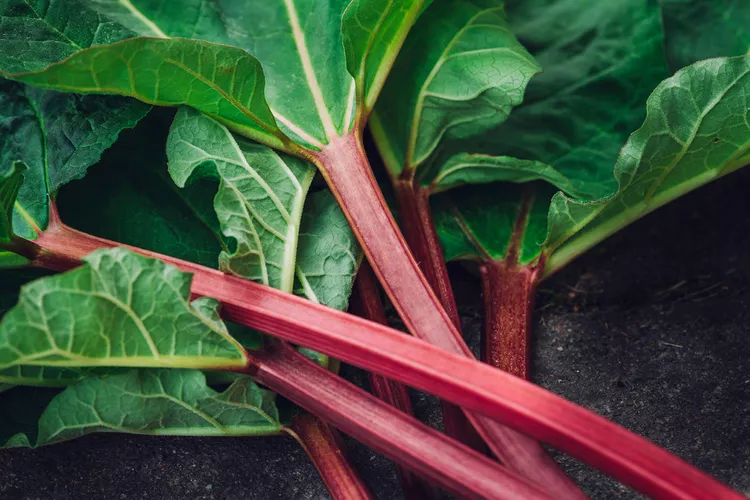Fresh rhubarb is a springtime treat that’s delicious in jams, jellies, and strawberry rhubarb pie. You can absolutely grow this vegetable yourself, but if you want to get the biggest and tastiest rhubarb stalks, you need to master the art of harvesting rhubarb. From timing your harvest to preserving freshly picked rhubarb, these tips will help you harvest a large crop of stalks without compromising the health of your plants.
The stalks of rhubarb are safe to eat, even raw, but the leaves are toxic to humans and animals.
1. Be Patient
Rhubarb plants are perennials that grow relatively slowly, and harvesting them before they’re fully mature can weaken the plants and cause stunted growth. Rhubarb grown from nursery starts can be harvested in its second year, one year after you plant it in your garden. However, if you’re growing rhubarb from seed, wait until plants are at least three years old to start harvesting.
2. Know When to Harvest
One of the great things about rhubarb is that the stalks can be picked in spring—long before most other garden vegetables start producing. In the northern hemisphere, rhubarb season usually begins in April or May and stretches through the end of June. Rhubarb continues to grow through summer and into fall, but it’s best to stop harvesting plants by early July as the stalks can get woody in summer, and the plants require time to recover before winter hits.
3. Don’t Worry About Stalk Color
When most people think about edible rhubarb, they think about long, crisp rhubarb stalks that are bright red or pink. However, the stalk color doesn’t indicate whether rhubarb is ripe. Different varieties of rhubarb have different colored stalks, and it’s fine to harvest rhubarb with pale stems.
4. Look for These Signs of Ripeness
The best way to tell if rhubarb is ripe is to measure the rhubarb stalks. Ripe rhubarb stalks should be at least 10 inches long (not including the leaves), but it’s OK to harvest stalks that are longer. Rhubarb develops flavor as it grows, and longer stalks often have the best taste.
Healthy rhubarb stems should also be crisp, firm, and plump. Mushy or damaged stems can be clipped away and composted, but spindly or thin stems should be left on the plant. Undersized stems usually need more time to grow, but they can also indicate that the plant is weak and needs some time to recover before further harvesting.
5. Use the ‘Twist and Pull’ Method
One of the most common mistakes growers make when harvesting rhubarb is using a knife on the stalks. Cutting rhubarb stalks can make plants more vulnerable to pests and diseases like crown rot. Also, cut stalks don’t regrow, and they can redirect the plant’s energy away from producing new stems.
Instead of cutting the stalks, harvest your rhubarb by grasping a stem near the soil line and twisting it free with a gentle, pulling motion. The stem should come away easily from the plant at the root line with a quiet pop. If the stalk is difficult to remove, move your hand closer to the soil line and pull again. Using this “twist and pull” method is healthier for rhubarb plants and encourages them to produce more stems for future harvests.
6. Limit Your Harvest
Like most vegetables and herbs, rhubarb plants can become weak and stop growing if they’re over-harvested. To avoid this problem, always leave at least one-third to half of the plant’s stems intact and wait for the plant to produce more stalks before harvesting again. Also, remember that young plants should not be harvested as aggressively as older, established rhubarb plants.
7. Remove the Leaves
Immediately after harvesting, use a sharp knife to cut the rhubarb leaves off the stalks. Rhubarb leaves are toxic, and they can cause harvested rhubarb stalks to wither prematurely. While those rhubarb leaves should never be eaten, it’s safe to compost them.
8. Store Your Harvest the Right Way
Fresh rhubarb stalks can be stored in a perforated bag in the crisper drawer of your fridge for three to four weeks, but don't wash them until right before you use them. For longer-term storage, rhubarb can be frozen or canned and stored in the pantry. If you plan on using rhubarb to make strawberry rhubarb pie, freezing the rhubarb stalks will ensure you have plenty of rhubarb on hand when strawberry season begins in June.




















